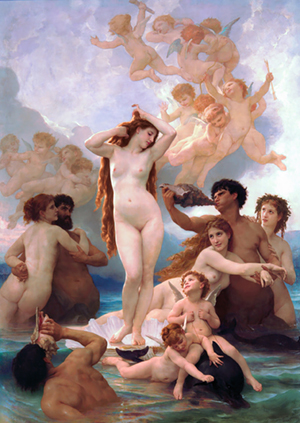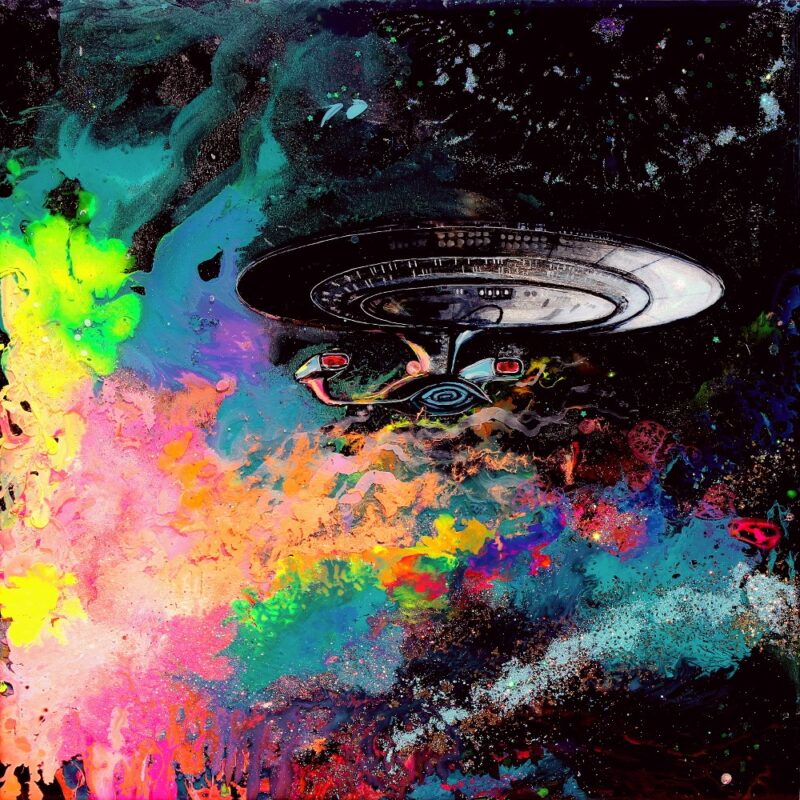What is the difference between erotica and pornography? What is the difference between art and pornography? One of the ironies of explicit images that portray sexual scenes is that they are rooted in the religious experiences of most cultures. From the dawn of time, religion and sex have been intertwined. This is especially true of the civilizations of the peoples of the ancient Near East, the region of the world that covers parts of modern- day Turkey, Iraq, Iran, Syria, Lebanon, Jordan, and Israel.
Contemporary events in this part of the world remind us of this fact from time to time. In 2006, a court in Istanbul, Turkey, acquitted 92-y ear- old Turkish archeologist Muazzez Ilmiye Cig of the criminal charge of inciting religious hatred. The crime with which Cig had been charged was connected to her academic research. One of the foremost experts in ancient Near Eastern civilizations, and especially the civilization of Sumeria, Cig had written that the veil worn by millions of women in the Middle East— and by religious women in the Western world— was a religious and sexual artifact that predated both Christianity and Islam. She stated that five thousand years ago, the religious headscarf, or veil, was a symbolic garment that helped set sacred temple prostitutes or priestesses apart from other women (Arsu, 2006). She had written that these sacred prostitutes had sex with young men in the pagan temple as an act of worship and celebration of the goddess of love, sex, and fertility. Cig argued that wearing a headscarf in contemporary society should therefore not be taken as an expression of a woman’s morality or religiosity (Arsu, 2006). Many Turks were not amused. The claim that the religious headscarf, or veil, was the distinguishing attire of temple prostitutes in ancient Sumeria was an explosive claim to make in Turkey, an Islamo- secular country.

Turkey criminalizes “incitement to religious hatred,” a coded expression for blasphemy, criticism of God and of religion. Cig was charged under this provision of the law. Professor Cig’s trial and acquittal demonstrates that issues of politics, sex, religion, and freedom of expression are very sensitive in many parts of the world, especially in the “Muslim world,” where it is believed that all sex-t hemed material— obscenity, pornography, erotica, and indecency (four-l etter words that describe sexual and toilet functions)— originate from a decadent “Western world” out to infect the cultures of the rest of the world. Indeed, in virtually all majority Muslim countries, portrayals of sex or sexuality of any kind in the media or in public are part of the so- called triple taboo. The two other legs of the taboo are religion and politics (Hafez, 2002).
In India, censors ensure that Bollywood (India’s movie industry) is not allowed to depict kissing or other acts of sexual intimacy. Activists of the Hindu nationalist movement, the Vishwa Hindu Parisad; the Bajrang Dal (Brigade of the Monkey God); and the ruling party of Prime Minister Narendra Modi, the Bharatiya Janata Party, use legal means to exert pressure on the Film Censor Board to censor objectionable films and sometimes resort to extralegal means to enforce the noovert-intimacy rule in Bollywood. Indeed, activists from these groups have vandalized art pieces; attacked artists whose work was viewed as indecent, immoral, and decadent; and forced the closure of exhibitions on university campuses as part of a “campaign against artists and writers who linked Hindu deities with sexuality, or talked openly and frankly about sexuality” (Doniger, 2014, pp. 396–9 7). In the last few hundred years, India has moved, in the words of Doniger (2014), “from Kama [the god of sex] to Karma [the sum total of one’s deeds and misdeeds].”
These critics of Western sexual mores claim that liberal Western sexual immoralities have diffused to the rest of the world through the traditional media and the Internet (Eko, 2001). The thinking behind this perspective is that pornography is a decadent Western phenomenon and that the pervasive presence of pornography on the Internet is a testament to the globalization of Western decadence and debauchery. Some countries declared that if this Western cultural filth were allowed into their countries unimpeded, it would infect and destroy their religions, political systems, cultures, and ways of life (Eko, 2001).

Visual depictions of scenes of human sexuality are as old as the earliest human civilizations. Archeological, historical, literary, and art- history evidence point to the fact that all civilizations in all continents had cultures of sex-t hemed visual imagery that were regulated under culture- specific religious and secular laws. The earliest and most well- documented sex- themed visual imagery is that of the early human civilizations that once existed in the ancient Near East and Egypt, the part of the world now known as the Middle East. The point is that visual representations of nudity and explicit sex— pornography and erotica— are universal phenomena that have existed since the dawn of human civilization. They conveyed different political, economic, social, religious, and cultural meanings in different parts of the world before and even after the advent of Christianity and Islam. In other words, archeological, historical, and art-h istory evidence shows that visual images of human sexuality are “pregnant” with the mentalities and worldviews of specific civilizations and cultures. Since they are produced within specific cultural contexts, explicit, sex-t hemed visual images abide by the values, rules, and regulations of the cultural milieus within which they are produced. Before writing was invented, ideographs, pictographs, cave wall graffiti, and clay tablets depicting human sexuality were the first regulated representations of sex- themed visual imagery produced within the politico- cultural and religious contexts of early man and ancient civilizations.
Muazzez Ilmiye Cig’s trial and acquittal shined the international spotlight on visual representations spawned by an ancient politico- religious institution, sacred or temple prostitution whose existence has been documented by art historians, anthropologists, archeologists, classicists, and others. This volume surveys some of those ancient civilizations’ regulated sex-t hemed visual content. Cig’s trial also cast the spotlight on the intertwined political and religious cultures of Mesopotamia— the land between the Tigris and Euphrates river system, which historians call the “cradle of civilization.” This region included the Sumerian, Akkadian, Babylonian, and Assyrian empires. The Sumerians invented mankind’s first medium of systematic mass communication—w riting— in the form of the cuneiform script. Interestingly, the Sumerians did not have a word for religion because the worship of gods and goddesses was an integral part of their very existence.
Human beings are sexual animals. They are also expressive, religious creatures. When human sexuality, religiosity, and art mix, a sex-t hemed, visual culture develops. Archeological, historical, and art-h istory evidence demonstrate that in some ancient civilizations and cultures, these three dimensions of humanity coexisted harmoniously, were represented visually, and communicated to large national and transnational audiences. The term “sex- themed visual expressions” refers to representations of nudity in explicit scenes of human sexual conduct. These graphic depictions are as old as the human race. Archeological and art- history discoveries have shed light on the worldviews of the peoples of the ancient Near East whose civilizations flourished in the so-c alled Fertile Crescent: the valleys of the Tigris and Euphrates rivers. It was in this geographic region that organized agriculture began, the wheel was invented, the first writing (cuneiform) emerged on clay tablets, and the first urban settlements sprang up.

It was also in this part of the world, specifically in Babylon, that the world’s first recorded assembly and “publication” of law, the Code of Hammurabi, was undertaken. In this volume, I argue that archeological, historical, and art-h istory evidence demonstrate that explicit, sex-t hemed visual imagery has existed in virtually all human cultures—f rom the “cradle of civilization,”, to Silicon Valley in California. In other words, explicit, sex- themed visual imagery is a form of regulated representation that has been depicted in the visual media of every culture, from the clay tablets of Mesopotamia to the digital tablet computers of Silicon Valley.
The sex- themed art pieces of Mesopotamia were created long before the words “erotica,” “prostitution,” “pornography,” or “obscenity” became part of Greek vocabulary— their pathway to our modern, global usage. Playboy magazine is not the functional equivalent of the sex-t hemed visual imagery of the ancient Near East. The word “erotic” comes from the name of the Greek god of sexual love and passion, Eros. The Greco- Roman mythology of Eros (whose Roman equivalent is Cupid) emerged long after the cultures of the ancient Near East.
In an attempt to bring some clarity to the issue, some artists, critics, and writers make a distinction between art and erotica. Scholars also classify certain representations of sex as erotic art, or erotica, and others as mere pornography. The distinction between erotica and pornography seems to be widely accepted in art scholarship. Mahon (2007) suggests that pornography is essentially known for its intent to sexually arouse—n othing more, nothing less. This obsession with sexual arousal for its own sake precludes pornography from being classified as “art.” This is because art comes with culture-s pecific conventions of aesthetics and almost always elicits complex emotional and intellectual responses. She adds that erotic art may have aspects of pornography, but those aspects are not there for sexual arousal alone. She says of erotica, “It plays on the aesthetics of imagination, uses sexual imagery to critique social, religious and political realities, as well as artistic taste” (Mahon, 2007, pp. 14– 15).
Cahill (2012) also makes the distinction between erotica and pornography in Chinese painting. He says, “I make a distinction, then, between erotic art, which I take these to be, and pornography, low-l evel pictures meant mainly for sexual arousal. I am aware of post-s tructuralist arguments that aim at blurring or erasing that distinction, preferring to see erotic art and pornography as simply representing higher or lower social classes in the consumers.”
For her part, Matthews- Grieco (2010) applies the distinction between pornography and erotica to the Renaissance: “‘Pornography’ refers to explicit sexual imagery, while erotica refers to implicit ‘erotic’ representations of the human body in more evocative and sexually suggestive ways” (p. 5). In short, to some people, pornography is considered to be the crude, vulgar, exploitative commercialization of sex, while erotica is considered to be the aesthetically pleasing, or at least acceptable, depiction of sex. Erotica is considered to be tasteful and classy material that brings out the noble sentiments in people, while pornography is considered to be crass, tasteless, commercialized artistic tripe aimed at the baser, animalistic instinct of the viewer. This distinction is roughly the modern distinction between hardcore and softcore “pornography.”

Painting by Anna Marinova. Visit her gallery – Click here
While this distinction may have placated censors over the years and given art critics a way of seeing and classifying diverse representation of sex, the pornography– erotica dichotomy is not helpful, legally speaking, because it is subjective and does nothing to solve the problem of vagueness. The word “erotic” is said to refer to libidinous desire (Morgan, 2012). One person’s titillating pornography is another’s high- class erotica. Indeed, as the Canadian Special Committee on Pornography and Prostitution noted in 1985, critics have come up with the word “pornokitsch” to describe pornography with artistic pretentions (Special Committee on Pornography and Prostitution, 1985). Therefore, one person’s erotica is another person’s pornokitsch.
The opulent art of the European grand masters, which is believed to represent the height of aesthetics and culture, also expresses power and gender dynamics. This is because the sex- themed art of the Renaissance is almost always presented from the perspective of the ogling gaze of the European male (Howell and Negreiros, 2011). The rich artistic environment of the Renaissance also gave rise to the word obscenus the ancestor of the English word “obscene.” In 1967 and 1986 respectively, the Johnson and Reagan administrations established commissions to study the problem of the regulation, distribution, and effects of consumption of pornography (Presidential Commission on Obscenity and Pornography, 1970). In the absence of a clear legal definition, the commission described the type of material it was assigned to study as “sexually-o riented material” (p. 3). The Attorney General’s Commission on Pornography (US Department of Justice, 1986, pp. 323– 47) listed the following categories of pornography: sexually violent material that intermingles sex and violence; sexually explicit, nonviolent materials depicting degradation, domination, and subordination, or humiliation; sexually explicit, nonviolent and nondegrading materials; and nudity presented in a sexual context. Social science researchers do not make a clear distinction between pornography and erotica. Harris and Bartlett (2008) suggest that because “the term pornographic is highly value laden . . . and as such is rather scientifically imprecise,” it is preferable to refer to sex-t hemed visual images as “‘sexually explicit’ rather than ‘pornographic.’”
For its part, the Attorney General’s Commission on Pornography (US Department of Justice, 1986) decided that since the word “pornography” had, over time, acquired a highly pejorative ring to it due to value judgments that did not exist in the word’s original Greek context, the word should be used sparingly and only to describe material that was “predominantly sexually explicit and intended primarily for the purpose of sexual arousal” (US Department of Justice, 1986, pp. 228– 29). The committee took no position on whether some or all of the material that fell under that definition should be prohibited or even banned. The commission defined hardcore pornography as “extreme” forms of pornography. As for the word “obscene,” the committee noted that the word had a ring of moral and legal condemnation to it. Therefore, obscenity referred to material that could be prosecuted without violating constitutional guarantees of freedom of expression. As for the term, “erotica” the committee stated that “the term as actually used is the mirror image of the broadly condemnatory use of ‘pornography’ being used to describe sexually explicit material of which the user of the term approves” (p. 230). The committee noted that the word was so elastic that it covered everything from “any sexually explicit material that contains neither violence nor subordination of women” to all sexually explicit material to “only material containing generally accepted artistic value” (p. 231). In view of this overbroad, imprecise, and diverse (from a law enforcement perspective) deployment of the term “erotica,” the committee decided to avoid using the word where a more precise term would suffice.
Some art historians and other scholars, who do not put much stock in the legal niceties and semantic precision of law enforcement, have continued to maintain the pornography– erotica divide. The scholarly distinction between erotic art and pornography is not legally recognized in the United States or most other democratic countries. From a regulated, representational perspective, there is little or no distinction between graphic, sexually explicit pornography and subtle, allusive, softcore pornography. Legally speaking, in the United States, there is no distinction between pornography and erotica. They are both classified as sex-t hemed “speech” that is regulated under the First Amendment. This is because under the “radically nonjudgmental” First Amendment, to use the expression of Schauer (2005), “there remains a pervasive American suspicion of official valuation of ideas and enterprises.”
Human beings produce visual depictions of sex acts because human beings are sexual animals. Existence, indeed life itself, is grounded in sexuality. Ancient visual depictions of sex demonstrate that human sexuality had a religious dimension. To the ancients, religion, sex, and sexuality were inseparable. Sacred marriages to gods and goddesses and the performance of sex acts in temples symbolically united human beings and divinities in numerous cultures.
In the United States and other Western countries, the “adult entertainment” or pornography industry is perpetually on the prowl, looking for the next sex “goddess.” Its agents trawl college and university campuses, beauty pageants, and talent shows in their endless search for the next super “playmate,” “kitten,” or “bunny” to pose nude and grace the covers of its magazines. Others seek “performers” in the industry whose stock- in- trade is sex. The beauty, fashion, and cosmetics industries search fashion shows, beauty pageants, cheerleading contests, and dance competitions looking for the next all- American, fresh- faced beauty. What the billion- dollar sexual capitalism industry is doing is reenacting, through secular means, the ancient religious practice of worshipping revered goddesses of love, sexual passion, and fertility. Since even the most beautiful women and the most handsome men grow old and die, the beauty, fashion, and sex industries profit from the human fears of old age, death, and decay. They attempt to assuage human existential anguish through the perpetual—a nd highly lucrative— presentation of new sex goddesses and gods on whom segments of society project their hopes, desires, and intimate longings. Magazines give the sex goddesses and gods the title “sexiest man alive” or “sexiest woman in the world” until their “sexiness” fades or ceases to be profitable to the sexual capitalism industry, which proceeds to look for the next mortal god or goddess. These are modern manifestations of ancient practices, albeit with capitalist, rather than religious, motives.
The ancient world was replete with gods and goddesses. This is especially true of the ancient Near East. Archeologists tell us that virtually all the nations of what today is the Middle East and North Africa had female deities who symbolized the physical and spiritual ideals and aspirations of their people (Goodison and Morris, 1998). The most famous goddesses of the Near East were the Babylonian Ishtar, or Ashtoreth, who was the contemporary and counterpart of the Egyptian goddess Isis. The cult of these two goddesses was very widespread in the region. Depending on the language spoken, the name of the goddess was Ashera, Ashtoreth, Astarte, Ishtar, Innana, or Astart. She was the goddess of love, sexual instinct, and fertility. Her cult was famous for setting aside certain “groves” in which worshippers engaged in all kinds of sexual activities as acts of religious “worship” (Watson, 1833). These acts took place under the watchful eyes of statues of the goddess. In a sense, goddesses were mankind’s first sex objects. It is believed that King Solomon introduced the worship of Ishtar or Ashtoreth in Israel through his wife, Queen Jezebel, who was from Sidon in what today is Lebanon.
The Babylonian goddess Inanna and her Semitic counterpart Ishtar are described as infinitely diverse and ambiguous. Inanna is the “perpetually marriageable maiden . . . the unattached woman, whether unmarried maiden or harlot, eternally free of the marriage tie” (Westenholz, 1999, p. 72). In the Biblical book of Acts, we read that when St. Paul first preached Christianity in Ephesus, a city that today is part of modern-d ay Turkey, craftsmen who made silver shrines and replicas of the goddess Diana of Ephesus to sell to her devotees caused a riot because they felt that Paul had discredited or blasphemed the goddess. Diana of the Ephesians was actually a combination of the Greek goddess Artemis and the Semitic goddess Ashtoreth, patroness of the sexual instinct. An impressive statue of Diana stood inside the temple of Ephesus, considered to be one of the seven wonders of the ancient world. The cult of Ashtoreth, or Astarte, ultimately became the model for Aphrodite, the Greek goddess of love, beauty, sexual pleasure, and procreation. Her Roman equivalent is the goddess Venus, who was recognized as the mother of the Roman people as well as the goddess of love, beauty, sex, fertility, and prosperity.
*This article is a brief excerpt from the book: The Regulation of Sex-Themed Visual Imagery




